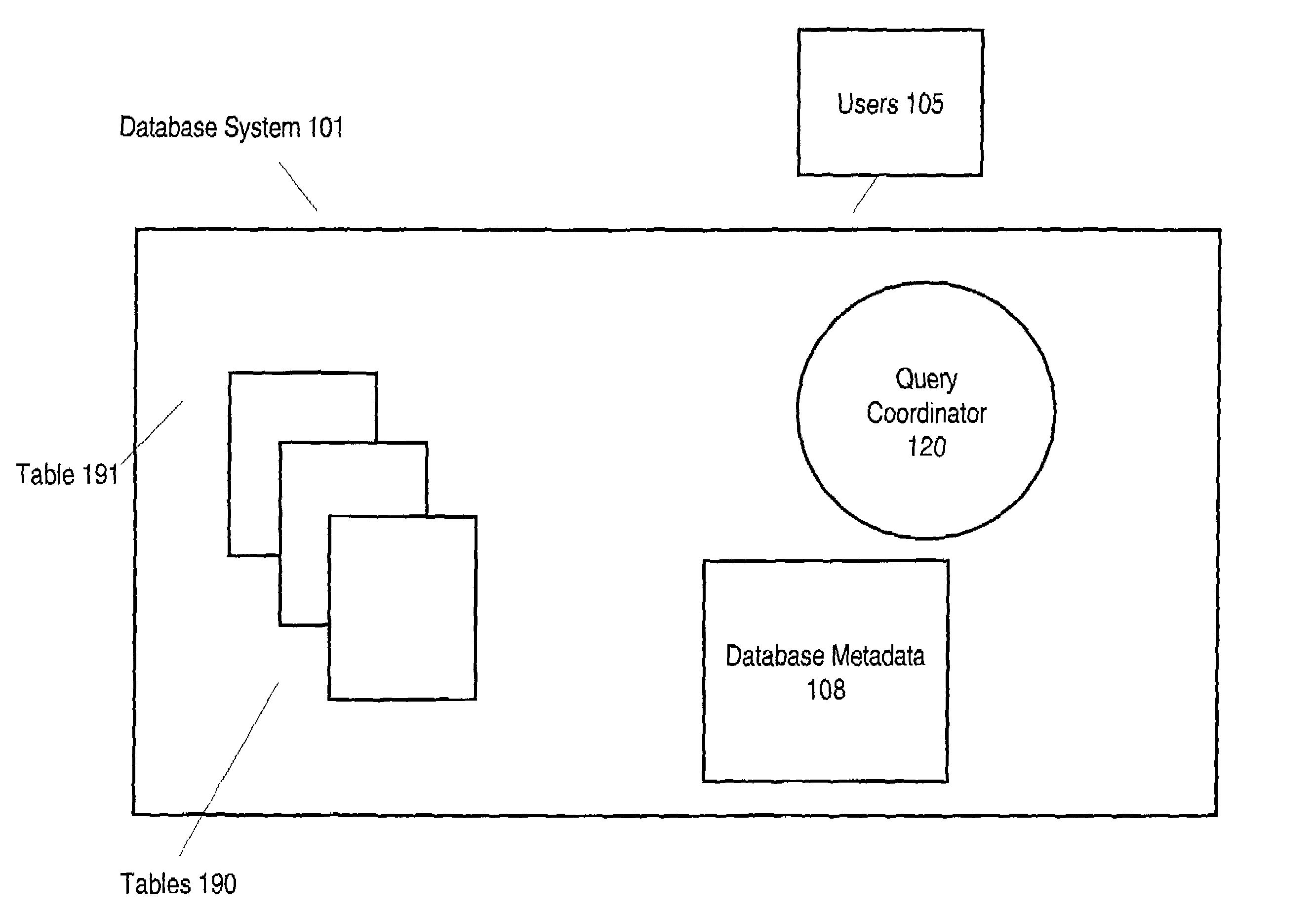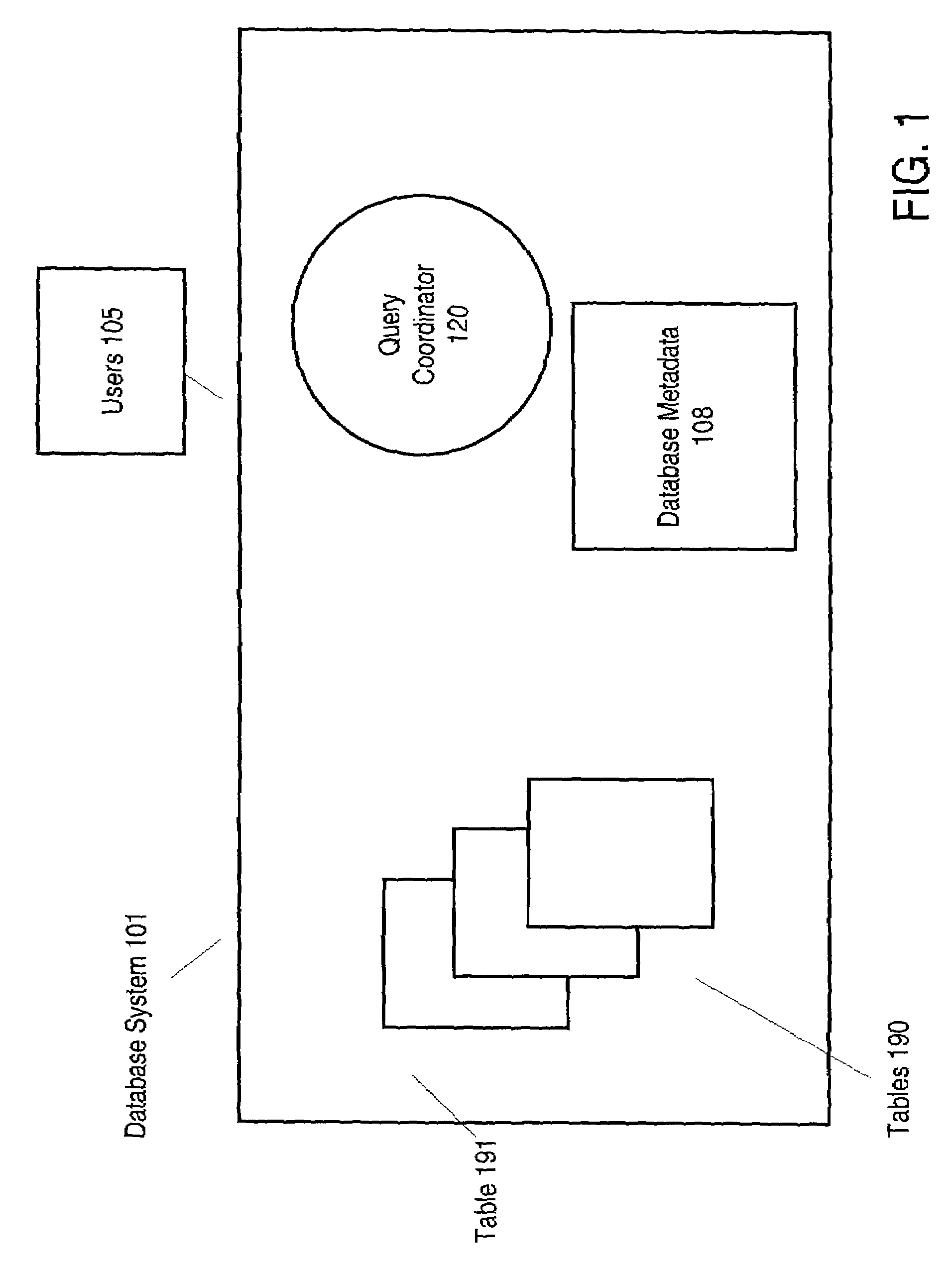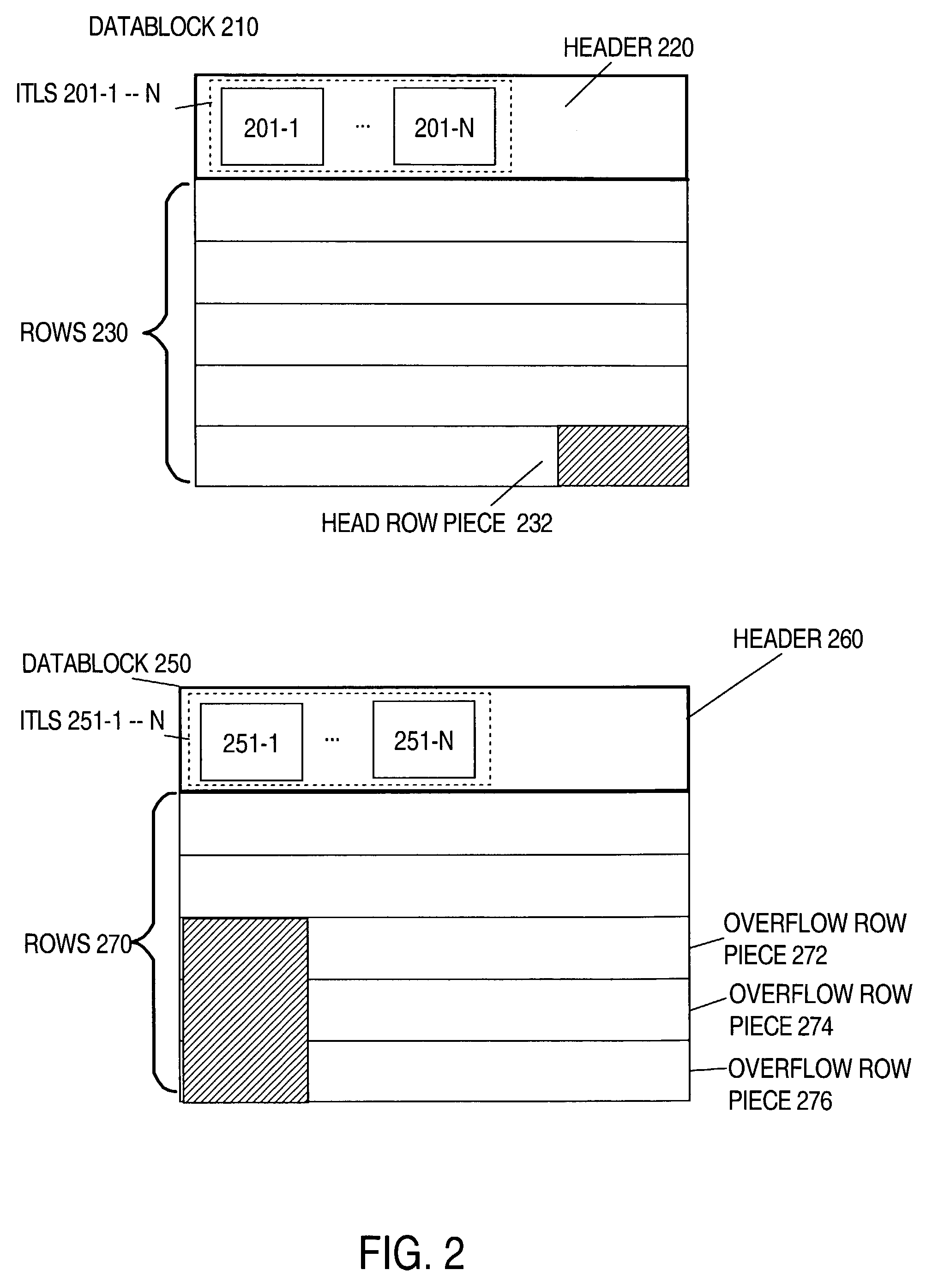Reducing contention by slaves for free lists when modifying data in a table partition
a free list and table partition technology, applied in the field of parallel database tasks, can solve the problems of limiting the degree of parallelism that may be achieved for a distributed dml operation, limiting the degree of parallism that may be achieved for dml operations, and unable to perform tasks involving dml operations to non-partitioned tables as distributed operations
- Summary
- Abstract
- Description
- Claims
- Application Information
AI Technical Summary
Problems solved by technology
Method used
Image
Examples
Embodiment Construction
[0036]A method and apparatus is described for performing DML database tasks in parallel using multiple processes. In the following description, for the purposes of explanation, numerous specific details are set forth in order to provide a thorough understanding of the present invention. It will be apparent, however, to one skilled in the art that the present invention may be practiced without these specific details. In other instances, well-known structures and devices are shown in block diagram form in order to avoid unnecessarily obscuring the present invention.
Overview
[0037]Provided herein are techniques that may be used to dramatically increase parallism for distributed DML operations. The work of distributed DML operations are distributed in a way that avoids self-dead locks, by ensuring that, for a given data block, no more than one slave is assigned to modify a row that is wholly contained by the data block or whose head row piece is contained by the data block. Assigning sla...
PUM
 Login to View More
Login to View More Abstract
Description
Claims
Application Information
 Login to View More
Login to View More - R&D
- Intellectual Property
- Life Sciences
- Materials
- Tech Scout
- Unparalleled Data Quality
- Higher Quality Content
- 60% Fewer Hallucinations
Browse by: Latest US Patents, China's latest patents, Technical Efficacy Thesaurus, Application Domain, Technology Topic, Popular Technical Reports.
© 2025 PatSnap. All rights reserved.Legal|Privacy policy|Modern Slavery Act Transparency Statement|Sitemap|About US| Contact US: help@patsnap.com



